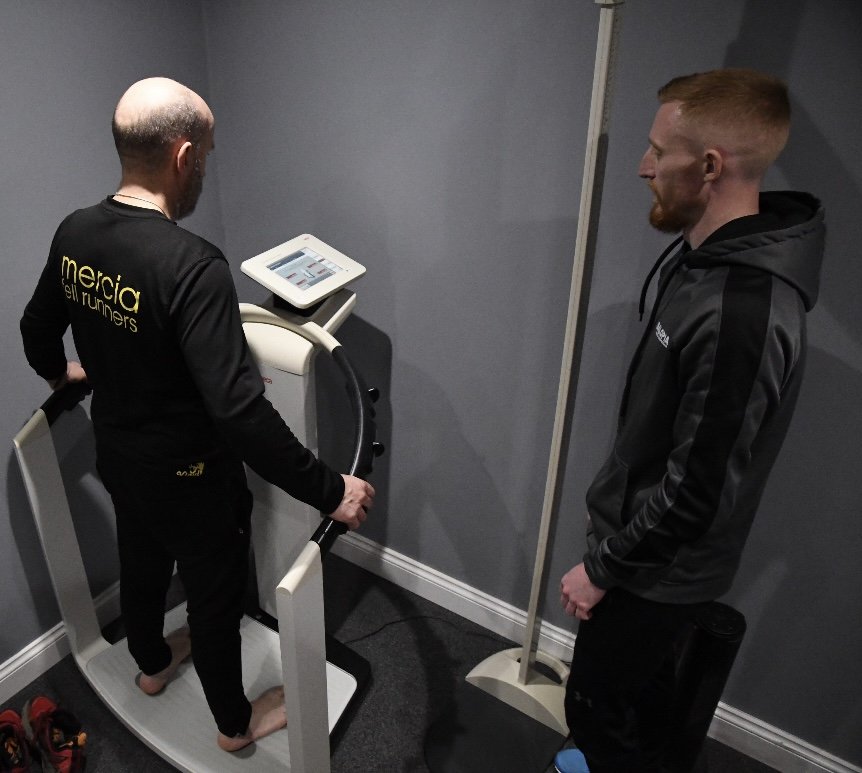What is body composition and how do we measure it? The pros and cons of different body fat measurement methods
What is body composition analysis?
In simple terms - it is a measurement of what your body is made up of…
This includes:
Muscle Mass
Body Fat Mass
Water/Hydration
Bone Density
Why should we measure it?
Muscle mass is important for longevity! (5) The more muscle mass & strength we have the more active we will be in later life. Muscle also is an important part of regulating insulin and preventing diabetes (5), not to mention hosting many of our immune cells.
Body fat is unquestionably linked to many chronic diseases and reduced life expectancy (3). As body fat increases, so does the risk of disease and poor health. Therefore finding out how much body fat we have and what we should be aiming for is important.
Water/Hydration is an obvious one, if we’re dehydrated (even mildly) our body under performs cognitively (1) and physically (4) and can even potentially make losing body fat harder (6,7). However, just drinking more water doesn’t mean we are better hydrated, this depends on salt and electrolytes to whether we store the water or just pass it.
Bone density (sometimes called bone mass) is important for longevity too (2). This can lead to back pain for example, and as we become elderly the chance of breaking a bone increases which can be life threatening, especially for those with bone density related diseases.
There are several ways to measure body fat:
Skinfolds
This is where a practitioner using skin fold callipers to pinch your body fat in specific regions of the body to estimate total body fat. This can be accurate when done by a highly qualified professional, as if you measure different locations on the body each time it will vary the results. However, this won’t tell you about other body composition components.
Bioelectrical Impedance
BIA devices pass a low voltage electric current through the body. Measuring the resistance against fat and muscle tissues provides data used in equations to calculate body composition parameters. This is 98% validated against other gold standard methods for each individual component of body composition.
DEXA Scan
At the simplest level, a DEXA body composition scan measures how much fat, lean mass and bone you have in your body. This is done via lying in an X-ray machine and an arm moves up and down scanning the body.
What are the pros and cons of each method?
*Many people who do skinfolds aren’t highly skilled and therefore the results can vary widely unless measuring significant changes. The gold standard is the ISAK qualification.
**You can’t use Bioelectrical Impedance if you have any electronic devices implanted within your body, such as a pacemaker. This means for the majority it is completely fine.
We think Bioelectrical Impedance Analysis is the best route to take to find out your body composition. It is relatively quick, non intrusive as you can remain clothed, you can repeat it regularly at low cost, and is 98% accurate. You can see the studies by clicking here for reliability and validity of our Seca Body Composition device.
Here is a link to our Body Composition Assessments in Shrewsbury if you would like to find out more or book in with us.
It’s also worth pointing out that all of the above body components can be improved with specific nutrition and different types of training modalities. We can help you with this, just drop us a message and we can have a chat 😎
References
1) Adan, A., 2012. Cognitive performance and dehydration. Journal of the American College of Nutrition, 31(2), pp.71-78.
2) Cauley, J.A., Lui, L.Y., Barnes, D., Ensrud, K.E., Zmuda, J.M., Hillier, T.A., Hochberg, M.C., Schwartz, A.V., Yaffe, K., Cummings, S.R. and Newman, A.B., 2009. Successful skeletal aging: a marker of low fracture risk and longevity. The Study of Osteoporotic Fractures (SOF). Journal of Bone and Mineral Research, 24(1), pp.134-143.
3) Donini, L.M., Savina, C., Gennaro, E., De Felice, M.R., Rosano, A., Pandolfo, M.M., Del Balzo, V., Cannella, C., Ritz, P. and Chumlea, W.C., 2012. A systematic review of the literature concerning the relationship between obesity and mortality in the elderly. The journal of nutrition, health & aging, 16, pp.89-98.
4) Nuccio, R.P., Barnes, K.A., Carter, J.M. and Baker, L.B., 2017. Fluid balance in team sport athletes and the effect of hypohydration on cognitive, technical, and physical performance. Sports Medicine, 47, pp.1951-1982.
5) Srikanthan, P. and Karlamangla, A.S., 2014. Muscle mass index as a predictor of longevity in older adults. The American journal of medicine, 127(6), pp.547-553.
6) Thornton, S.N., Even, P.C. and Van Dijk, G., 2009. Hydration increases cell metabolism. International Journal of Obesity, 33(3), pp.385-385.
7) Thornton, S.N., 2016. Increased hydration can be associated with weight loss. Frontiers in nutrition, 3, p.18.


